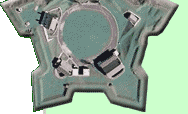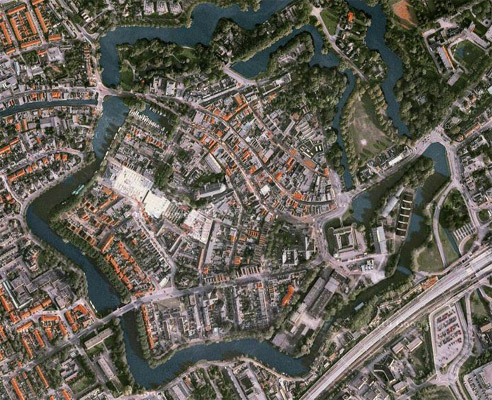
 |
 |
Woerden The Netherlands |
 |
 |
 |
 |
 |
||
 |
Woerden sits on the Oude Rijn River, which in dayes of olde was an important part of the Rhine river delta: The series of tributaries of which Oude Rijn is one has since mostly silted over at strategic locations, but for a great many years Woerden stood on slightly elevated land that a lot of people thought was important.
Romans, Frisians and Franks battled over the area starting roughly when the Romans built a castellum there in 40AD as part of a series of defenses along Rome's northern borders, until the 10th century when it was made clear that Woerden belonged to Saint Martin, which really meant the Bishop of Utrecht. At the beginning of the 12th century, the Frisians to the west got organized and created what became Holland along the coast, putting Woerden, still part of the Bishopric of Utrecht, squarely on the border between the two belligerents. In 1165 Bishop Godfrey van Rhenen (d. 1178) fortified Woerden by having a castle built there. Through a series of twisty-turny royal wrangling, Woerden became part of Holland at the start of the 14th century. Around 1370, with an eye towards defending Holland from Utrechtian advances, Woerden's Bailiff Willem van Naaldwijk began construction of the elaborate and starrish moat system around the town that we see today. In 1527, the Bishop of Utrecht sold his lands to Holy Roman Emperor Charles V (1500-1558), which united the lands on either side of Woerden as Holland. Prior to this union, however, Charles had introduced the region to the Inquisition in 1522. While Charles V's reign was both peaceful and profitable for Woerden, allowing the town's population to grow and businesses to flourish in ways that they couldn't during the previous centuries of constant conflict, Lutheranism was of course not permitted. This led to such fun-filled events as the burning at the stake in 1525 of Johannes Pistorius Woerdensis, a Lutheran priest from Woerden. The Spanish came in force in 1575 and 1576, occupying Woerden in their Spanishy way, as they did for much of the rest of Holland. Holland's independence from Spain, won in The Eighty Years' War (1568-1648), opened the way for France to occupy Woerden in 1672 and 1673. In 1813, the French made a mess of the town while on their way out of the Netherlands following Napoleon (1769-1821)'s defeat at the Battle of Leipzig (October 16-19 1813). As is the case with a great many towns with old fortifications, guys dress up in period clothing and lug enormous and inefficient firearms around on an annual basis in Woerden, reenacting various fun events from the city's past. This summer, one should expect extra noise and nuisance on the A12 between Woerden and node Gouwe direction Den Haag. Don't say I didn't warn you. |
 |
 |
||
|
|
|||||||
Info Source 1
Info Source 2
Info Source 3
Info Source 4 Info Source 5 Info Source 6 Thanks to Google Maps for the image! ©2010 starforts.com |
 |